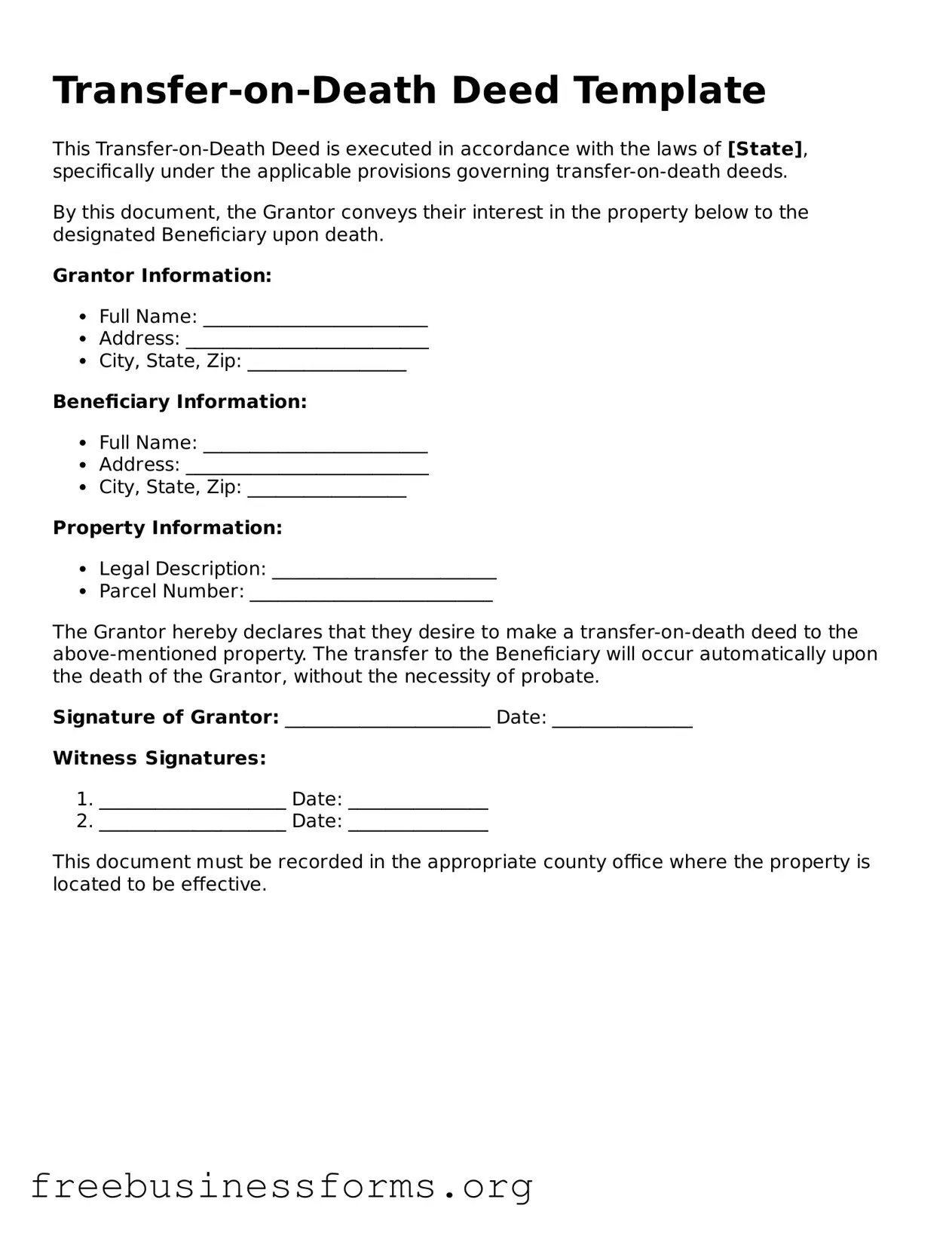Transfer-on-Death Deed Template
This Transfer-on-Death Deed is executed in accordance with the laws of [State], specifically under the applicable provisions governing transfer-on-death deeds.
By this document, the Grantor conveys their interest in the property below to the designated Beneficiary upon death.
Grantor Information:
- Full Name: ________________________
- Address: __________________________
- City, State, Zip: _________________
Beneficiary Information:
- Full Name: ________________________
- Address: __________________________
- City, State, Zip: _________________
Property Information:
- Legal Description: ________________________
- Parcel Number: __________________________
The Grantor hereby declares that they desire to make a transfer-on-death deed to the above-mentioned property. The transfer to the Beneficiary will occur automatically upon the death of the Grantor, without the necessity of probate.
Signature of Grantor: ______________________ Date: _______________
Witness Signatures:
- ____________________ Date: _______________
- ____________________ Date: _______________
This document must be recorded in the appropriate county office where the property is located to be effective.
